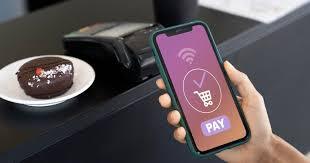Mobile Payments: Transforming Commerce in the Digital Age
Mobile payments refer to financial transactions conducted through mobile devices, leveraging wireless technologies and digital platforms for convenience, speed, and security. This article explores the fundamentals, types, benefits, challenges, adoption trends, and future prospects of mobile payments, highlighting their significant impact on consumer behavior, businesses, and the global economy.
Table of Contents
Fundamentals of Mobile Payments
Mobile payments enable users to initiate, authorize, and authenticate financial transactions using their smartphones, tablets, or wearable devices. Key components include:
- Mobile Wallets: Digital applications or platforms that store payment information securely, facilitating transactions via near-field communication (NFC), QR codes, or mobile apps.
- Payment Methods: Integrating various payment instruments such as credit/debit cards, bank accounts, prepaid cards, mobile money, and cryptocurrencies for seamless transactions.
- Security Protocols: Implementing encryption, tokenization, biometric authentication (e.g., fingerprint or facial recognition), and two-factor authentication (2FA) to safeguard sensitive financial data.
- Merchant Acceptance: Partnering with retailers, service providers, and e-commerce platforms to accept mobile payments, enhancing convenience and accessibility for consumers.
Types of Mobile Payments
- NFC-Based Payments: Using near-field communication technology to enable contactless payments by tapping or waving smartphones near NFC-enabled terminals.
- QR Code Payments: Scanning QR codes displayed at merchant locations or within mobile apps to initiate payments directly from the user’s mobile wallet.
- Mobile Banking Apps: Integrating payment functionalities within banking apps to transfer funds, pay bills, manage accounts, and monitor transactions on the go.
- Peer-to-Peer (P2P) Transfers: Sending and receiving money between individuals using mobile apps, leveraging phone numbers, email addresses, or social media profiles.
Benefits of Mobile Payments
- Convenience and Accessibility: Allowing users to make transactions anytime, anywhere, without carrying physical cash or cards, reducing dependency on traditional banking services.
- Speed and Efficiency: Accelerating transaction processing times, enabling instant fund transfers, and minimizing waiting times at checkout counters or payment terminals.
- Security and Fraud Prevention: Enhancing data encryption, tokenization, and biometric authentication to protect against unauthorized access, fraud, and identity theft.
- Financial Inclusion: Extending financial services to underserved populations, promoting digital literacy, and enabling economic participation in remote or rural areas.
Challenges in Mobile Payments
- Security Concerns: Addressing vulnerabilities such as data breaches, malware attacks, and unauthorized access to mobile devices or payment apps.
- Regulatory Compliance: Navigating regulatory frameworks, data protection laws, and compliance requirements across different jurisdictions to ensure legal and secure operations.
- Interoperability and Standards: Establishing compatibility between diverse mobile payment systems, platforms, and financial institutions for seamless cross-border transactions.
- Consumer Trust and Adoption: Educating consumers about the benefits of mobile payments, building trust in digital financial services, and overcoming resistance to change.
Adoption Trends and Future Prospects
- Rise of Contactless Payments: Increasing adoption of contactless NFC and QR code payments, driven by hygiene concerns and the convenience of touch-free transactions.
- Integration with IoT and Wearables: Expanding payment capabilities to IoT devices (e.g., smart speakers, connected cars) and wearable technologies (e.g., smartwatches, fitness bands) for frictionless payments.
- Biometric Authentication: Enhancing security and user experience with biometric authentication methods (e.g., fingerprint, facial recognition) for seamless and secure mobile transactions.
- Blockchain and Cryptocurrency: Exploring the potential of blockchain technology and cryptocurrencies (e.g., Bitcoin, Ethereum) for decentralized mobile payments, enhancing transparency and reducing transaction costs.
Conclusion
Mobile payments are reshaping the landscape of global commerce by offering fast, convenient, and secure transaction methods through smartphones and digital platforms. As technology evolves and consumer preferences shift towards digital solutions, addressing security concerns, promoting regulatory compliance, and fostering widespread adoption will be crucial. By embracing innovation, enhancing interoperability, and adapting to emerging trends, mobile payments are poised to continue driving financial inclusion, efficiency, and economic growth in the digital age.
